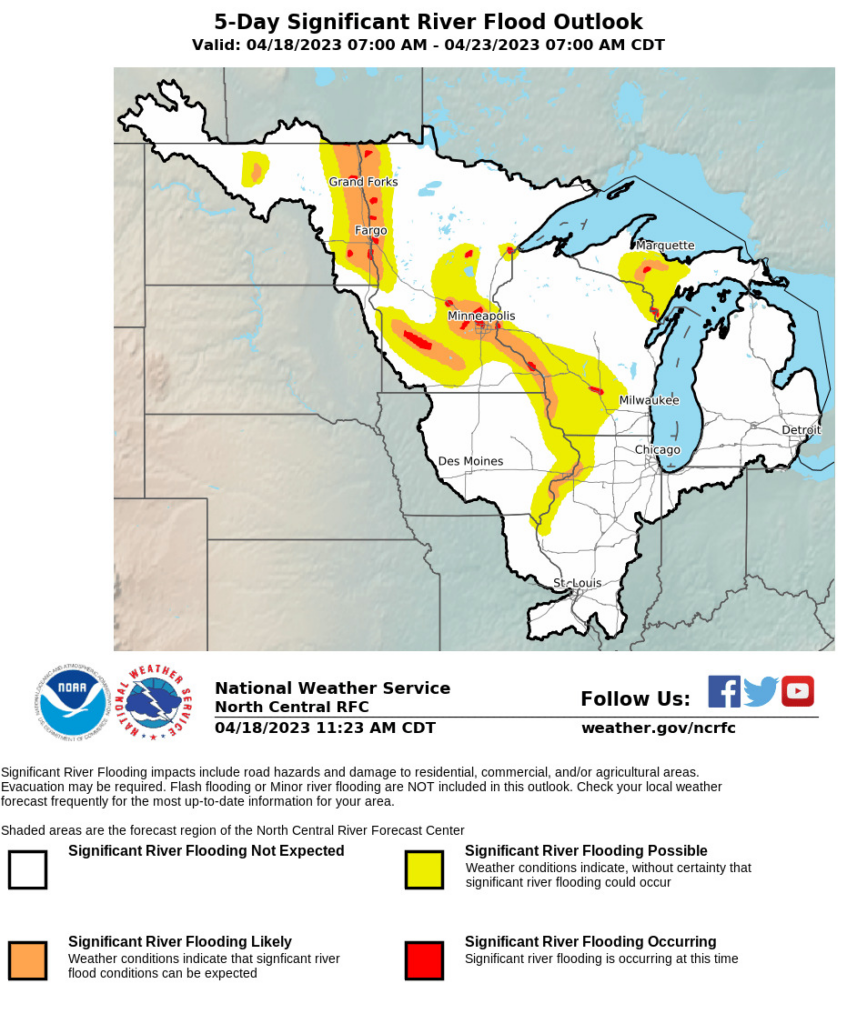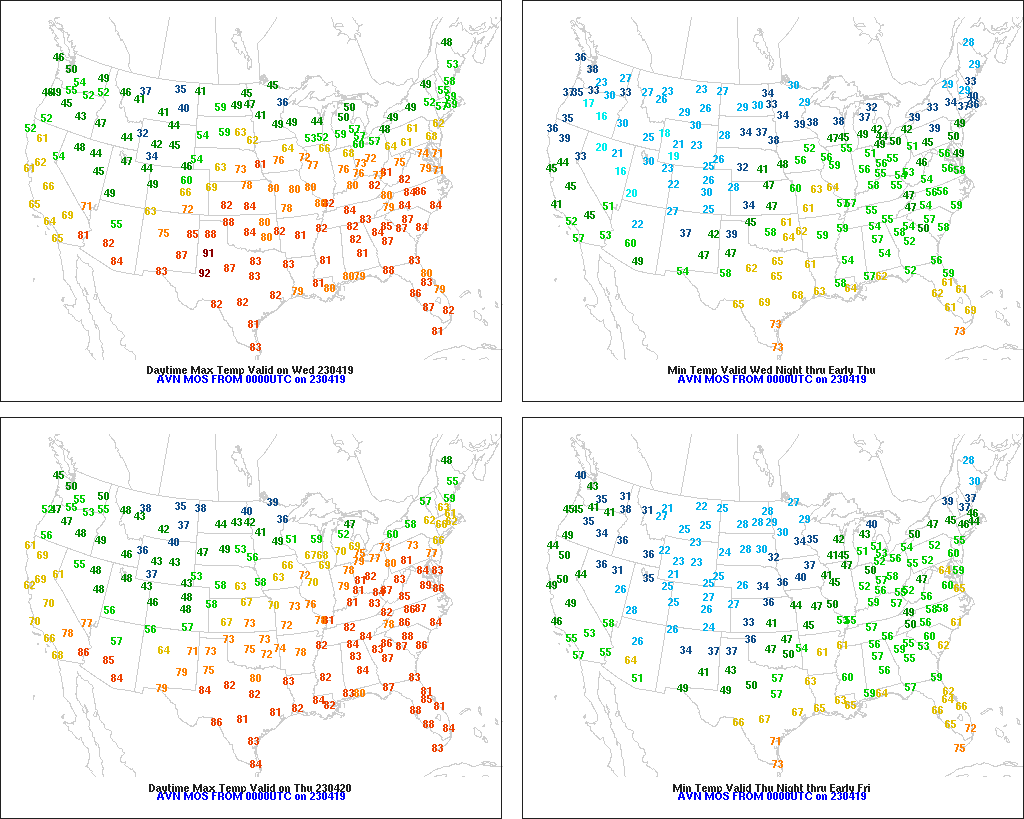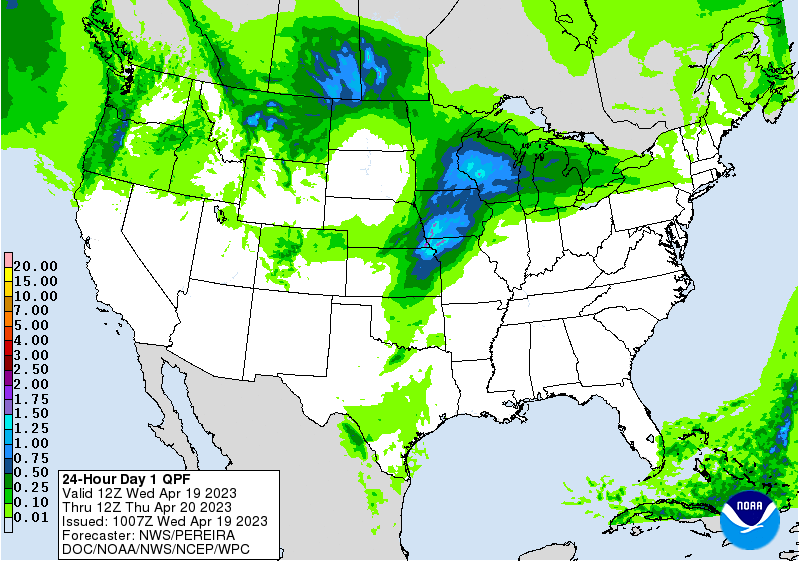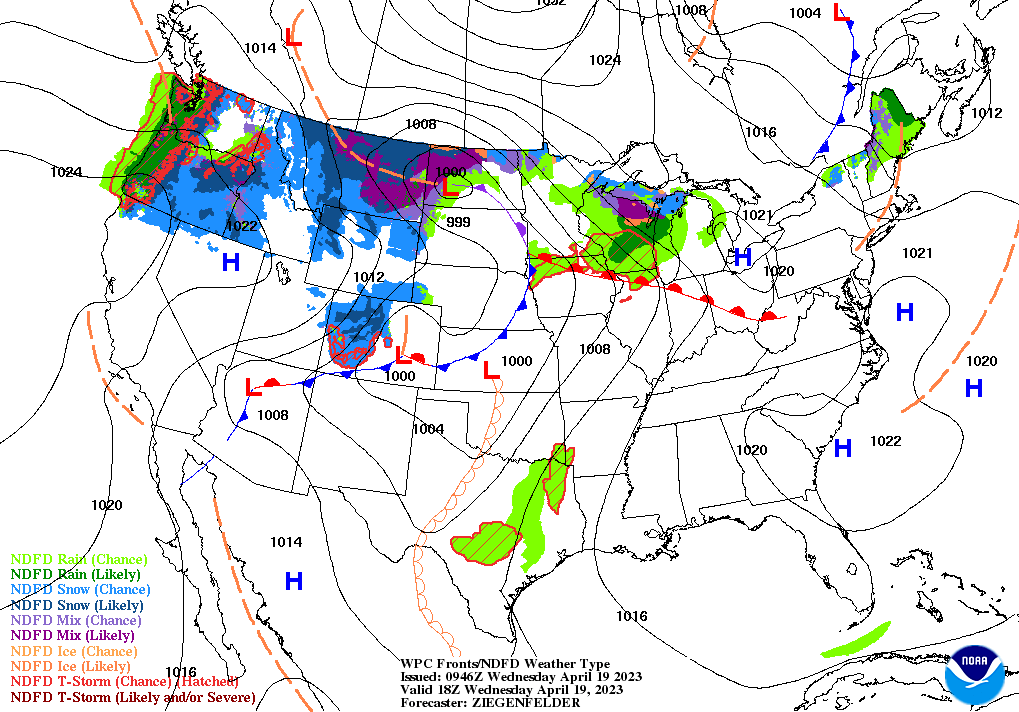Weather
A warm-up for much of the Heartland as a new, spring storm evolves via the Plains

Across the Corn Belt, cool weather lingers in the wake of a departing storm. Freeze Warnings were in effect early Tuesday in several areas, including eastern Iowa and northern and central Illinois. Meanwhile, cloudiness and snow showers continue to affect portions of the Great Lakes States. Prior to this storm’s arrival, some producers in the southern Corn Belt made significant planting progress; in Missouri, corn planting advanced from 7 to 30% complete during the week ending April 16. In addition, soybean planting was 2 to 5% complete on that date in Illinois, Indiana, Iowa, and Missouri.

On the Plains, warm, dry weather prevails from South Dakota to Texas. Prospects for winter wheat continue to deteriorate on the central and southern Plains, amid drought, warmth, and wind. On April 16, Kansas led the U.S. with 60% of its winter wheat rated very poor to poor, followed by Oklahoma (53%), Texas (52%), Nebraska (40%), and Colorado (38%). On the same date, topsoil moisture was rated at least two-thirds very short to short in Kansas (78%), Oklahoma (76%), Texas (69%), and Nebraska (68%).

In the South, scattered frost was noted early Tuesday in Kentucky. Elsewhere, cool, dry weather trails a cold front’s passage. Later Tuesday, however, temperatures will rebound to 80°F or higher in several areas, including southern Texas and parts of the Southeast. In many areas, conditions remain nearly ideal for spring fieldwork, including corn, cotton, rice, and soybean planting. By April 16, soybean planting was most advanced in Louisiana (30% planted) and Mississippi (23%).

In the West, cool, showery weather covers the northwestern half of the region. High-elevation snow is falling from the Cascades and Sierra Nevada to the northern Rockies. In contrast, warm, windy weather is leading to a significantly elevated wildfire threat in parts of the Southwest, particularly across New Mexico. Fieldwork is off to a slow start in portions of California, where no cotton had yet been planted by April 16, versus the 5-year average of 23%.

Add Comment